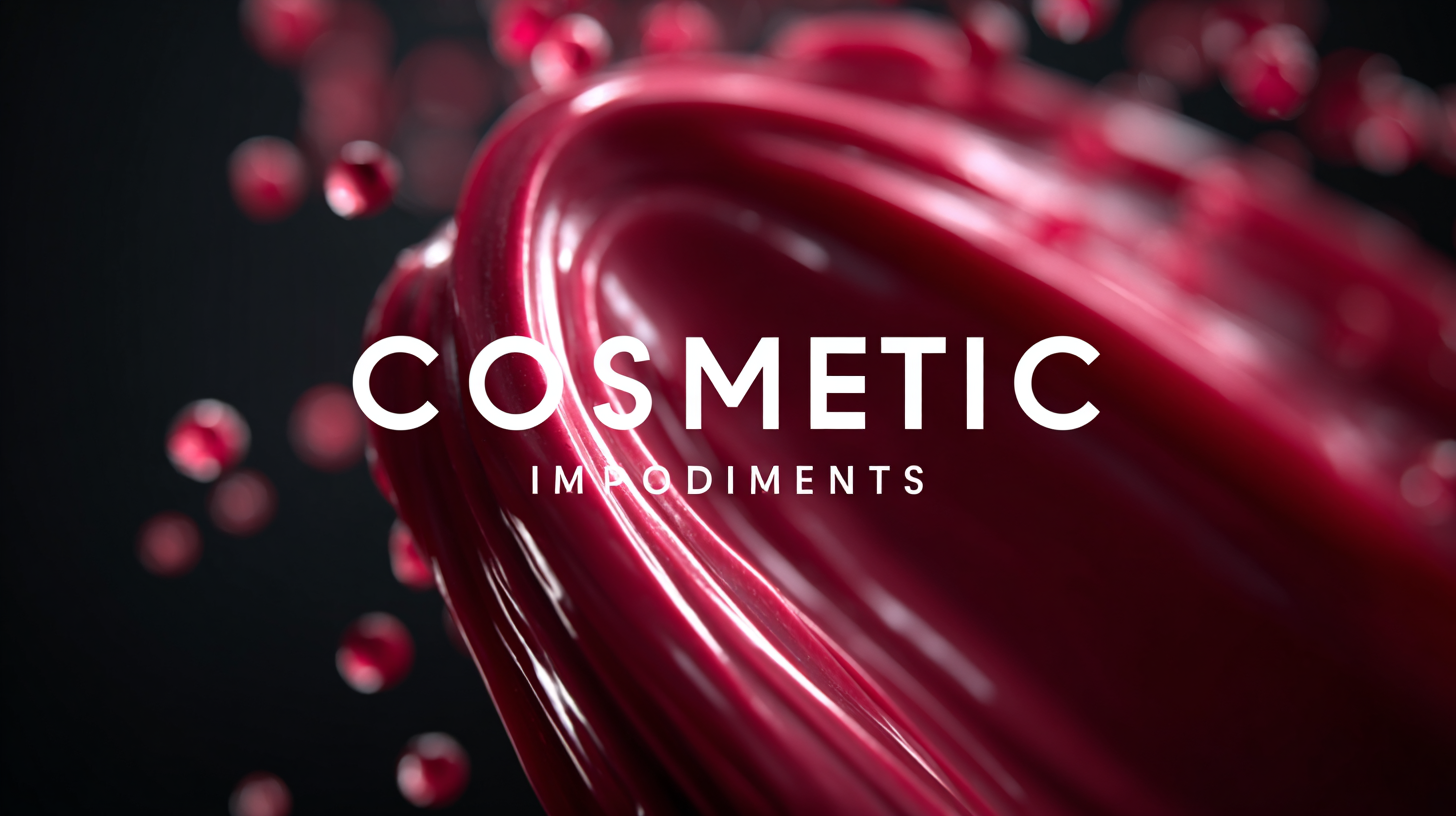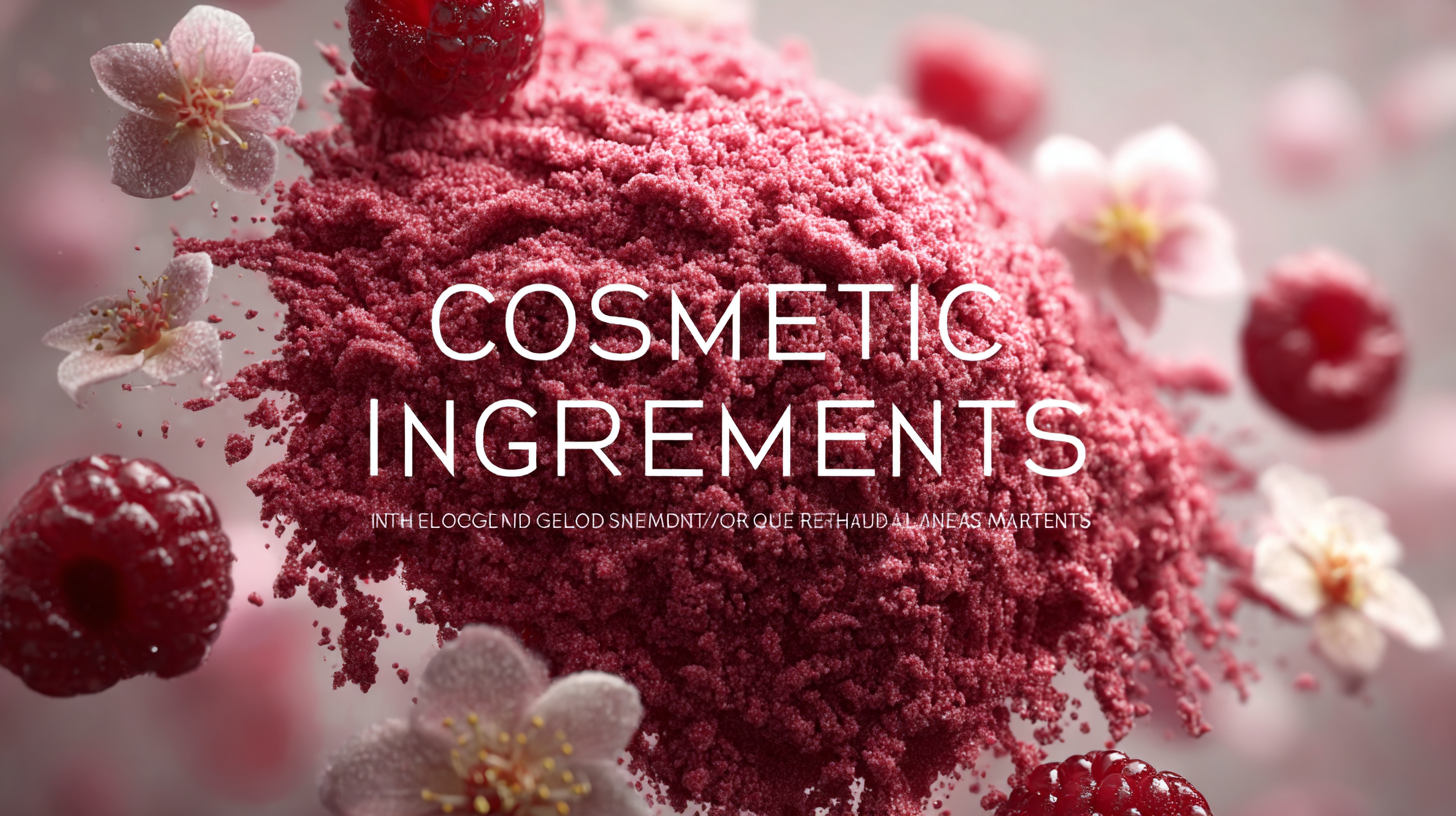In today's competitive beauty industry, sourcing the best cosmetic ingredients is crucial for brands aiming to stand out in global markets. With the ever-evolving consumer preferences and increasing demand for high-quality products, understanding the nuances of ingredient selection becomes essential. This blog will delve into key reasons why prioritizing premium cosmetic ingredients can significantly enhance product quality, ranging from improved efficacy and longer shelf life to sustainability and regulatory compliance. By exploring innovative sourcing strategies and highlighting the importance of transparency and ethical practices, brands can not only ensure superior product performance but also foster trust and loyalty among consumers. Join us as we uncover the best practices for sourcing cosmetic ingredients that resonate with quality-conscious consumers around the world.

As we approach 2025, several key trends in the global cosmetic ingredient market are set to
redefine the industry landscape. One of the most significant trends is the rise of
lab-grown ingredients. These innovative components not only enhance
sustainability but also mirror the effectiveness of traditional ingredients without the environmental impact.
Consumers are increasingly seeking products that combine efficacy with eco-friendliness, pushing brands to adapt rapidly to
this paradigm.
Another crucial trend is the integration of technology in beauty experiences. From
augmented reality in virtual try-ons to
AI-driven personalized skincare recommendations, tech-enhanced experiences are
becoming essential for brands aiming to engage tech-savvy consumers. As personalization continues to be a priority,
companies must focus on data-driven insights to tailor
products that meet individual preferences. This shift towards a more personalized and technologically integrated
approach will not only boost product quality but also enhance consumer loyalty in an increasingly competitive market.
Sourcing high-quality cosmetic ingredients is crucial for brands looking to stand out in the competitive global market. According to the 2021 "Global Cosmetics Market Report," the demand for natural and organic ingredients has surged, with a projected CAGR of 9.9% from 2021 to 2028. This impact is particularly pronounced in regions like North America and Europe, where consumers increasingly favor products with clean labels and sustainable sourcing practices. Brands should prioritize regions known for their unique raw materials, such as the Mediterranean for olive oil or South America for Amazonian oils, ensuring they align product quality with consumer preferences.
Incorporating a diverse sourcing strategy can also mitigate risks associated with supply chain disruptions. The 2022 "Cosmetic Ingredients Market Analysis" highlights that brands utilizing multiple sourcing locations reduce the potential impact of geopolitical tensions and natural disasters on their ingredient supply. Collaborating with local suppliers not only strengthens relationships but also creates opportunities for innovation, as regional suppliers are often more knowledgeable about local ingredient benefits and trends. By leveraging these diverse sourcing strategies, cosmetic brands can enhance their product quality and appeal to a broader audience in the ever-evolving global landscape.

In the ever-evolving landscape of cosmetic manufacturing, maintaining product quality has become more crucial than ever. According to a report by Grand View Research, the global cosmetics market is expected to reach $758.4 billion by 2025, underscoring the demand for high-quality products. To meet consumer expectations and regulatory standards, manufacturers must adopt innovative solutions that enhance the quality of their cosmetic ingredients. Implementing rigorous quality control measures and utilizing advanced technology in ingredient sourcing can tremendously impact product efficacy and safety.
One effective strategy is the integration of sustainable sourcing practices. A study by the Sustainability Consortium found that nearly 70% of consumers prefer products with sustainably sourced ingredients, influencing their purchasing decisions. By choosing ethically sourced materials, companies not only adhere to environmental standards but also boost their brand image and consumer trust. Additionally, leveraging data analytics can provide insights into ingredient performance and consumer preferences, allowing manufacturers to create products that resonate with global markets.
Prioritizing quality in ingredient selection is not just beneficial for compliance; it's a key driver of brand loyalty in today's competitive landscape.
 Navigating the labyrinth of regulatory challenges in global cosmetic ingredient sourcing requires a comprehensive understanding of both local and international laws. Each region has specific regulations that govern ingredient safety, efficacy, and labeling, making it essential for brands to stay informed. For instance, EU regulations necessitate rigorous safety assessments for cosmetic ingredients, while the FDA in the U.S. has its own set of guidelines. Companies must ensure that their sourcing practices align with these regulations to avoid hefty fines and product recalls.
Navigating the labyrinth of regulatory challenges in global cosmetic ingredient sourcing requires a comprehensive understanding of both local and international laws. Each region has specific regulations that govern ingredient safety, efficacy, and labeling, making it essential for brands to stay informed. For instance, EU regulations necessitate rigorous safety assessments for cosmetic ingredients, while the FDA in the U.S. has its own set of guidelines. Companies must ensure that their sourcing practices align with these regulations to avoid hefty fines and product recalls.
Tip 1: Develop a close relationship with regulatory consultants who specialize in cosmetic ingredients. Their expertise can help you understand the nuances of compliance in different markets, allowing you to make informed sourcing decisions.
Additionally, ingredient sourcing should not only focus on compliance but also on quality. High-quality ingredients not only enhance product effectiveness but also build consumer trust. Conducting thorough supplier audits and requiring quality certifications can ensure that your ingredients meet the highest standards.
Tip 2: Implement a robust supplier evaluation process that includes a review of their compliance with regulations, quality assurance measures, and sustainability practices. This diligence will safeguard your brand's reputation and product quality in the long run.
Building sustainable supplier relationships in the cosmetic industry is crucial for brands aiming to source the best ingredients while enhancing product quality. Establishing strong partnerships with suppliers not only ensures a consistent supply of high-quality materials but also fosters innovation and sustainability. Engaging with suppliers who share similar values regarding ethical sourcing and environmental responsibility can lead to more effective collaboration and mutual growth.
To nurture these relationships, brands should prioritize transparent communication and clear expectations. By involving suppliers in the product development process, companies can gain valuable insights into the latest trends and ingredient benefits, which can elevate their product offerings. Additionally, investing in long-term partnerships helps suppliers feel valued and committed to meeting the brand's quality standards. As a result, such collaboration ultimately leads to superior products that resonate with consumers who are increasingly seeking transparency and sustainability in the cosmetics industry.
2025 Bio-Botanica, a division of Bio Answer Holdings Inc. All Rights Reserved.